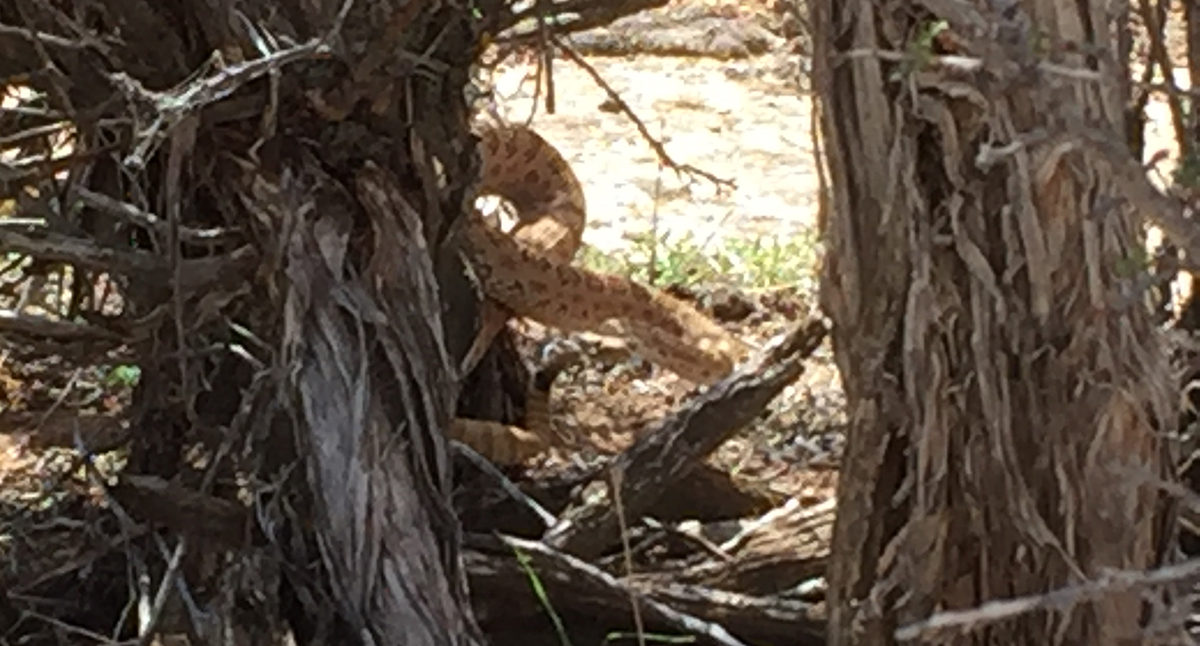Venomous snakes are impressive. These are the ultimate of ambush predators, and they nearly always go unnoticed in the undergrowth or canopies of the world. The lengths of evolution to achieve a creature with poisons that remain among the most potent in the world is really impressive. Add to that snakes’ generally miraculous abilities of locomotion from sidewinding to swimming to climbing vertical trees and you have a marvelous creation of nature. Snakes are associated in ancient societies with rebirth, the shedding of the old for rejuvenation. A snake is the symbol of Asclepius, a Greek god of healing. The snake took the water-plant that granted eternal life in the story of Gilgamesh. The Ouroboros is the ancient symbol of eternity. Snakes are the grantors of knowledge at great risk. Venomous snakes have always had an allure to me. On an impressionable level, the cartoon of Rikki Tikki Tavvi spoke of the impressive abilities and danger of cobras in the garden. They are the antagonists that can almost literally fly, yet their power is unrivaled. Snakes before had seemed almost helpless to me without legs, but this and a video of a corn snake climbing the vertical trunk of a tree showed the impressive power they really have. The spreading of the hood to warn of danger is at once cool looking, a warning, a sign of restrain, and a deadly beauty. They tend to be misunderstood and superstitiously hated. I like them both for the amazing creatures you find behind the misinterpretations and the necessity of reason to understand these creatures.
They tend to be misunderstood and superstitiously hated. I like them both for the amazing creatures you find behind the misinterpretations and the necessity of reason to understand these creatures. Their venom is often used for hunting, but not of people. They have a nearly invincible defense against would-be antagonists, and for the most part require only an acute awareness of one’s surroundings to avoid. Having been within steps of two infamous hundred-pacers, there was warning, but not aggression in their behavior. Most snakes would much prefer to be ignored or to even avoid a threat. The distinctive rattle of the desert is a warning intended to avoid the use of venom, not a threat of aggression. The mechanisms of the venoms from neurotoxins to hemotoxins and their ability to target specific biological functions is a wonder of chemistry. Vipers tend to have hemotoxins, retractable fangs, and infrared-sensitive pits which give them an added superpower. Their very name is fun to say. Elapids (cobras vel sim.) however, are the most potent of venomous snakes in the world. From the most venomous of all snakes, the reclusive Oxyuranus microlepidotus (inland taipan) to the king of all cobras Ophidiophagus hanna, the elapid family has the most formidable of venomous snakes. The king cobra can drop an elephant and bring a man down in less than an hour after raising five feet off the ground and looking him in the eye. Sea snakes have all but taken to the oceans, preying upon fish with their extremely potent venom and return to land only to lay eggs. Mambas are the fastest snakes in the world (a whole twelve miles/hour). Spitting cobras can launch venom over two meters. Coral snakes hold tri-colored beauty and warning that other species imitate for their own safety. Each species seems to have its own suite of nearly magical super-powers.
